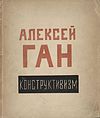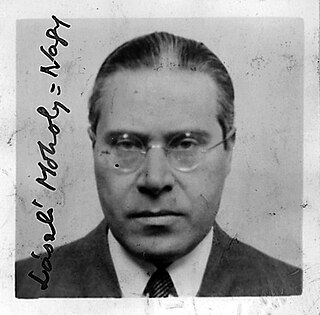
László Moholy-Nagy was a Hungarian painter and photographer as well as a professor in the Bauhaus school. He was highly influenced by constructivism and a strong advocate of the integration of technology and industry into the arts. The art critic Peter Schjeldahl called him "relentlessly experimental" because of his pioneering work in painting, drawing, photography, collage, sculpture, film, theater, and writing.

Suprematism is an early twentieth-century art movement focused on the fundamentals of geometry, painted in a limited range of colors. The term suprematism refers to an abstract art based upon "the supremacy of pure artistic feeling" rather than on visual depiction of objects.

Lyubov Sergeyevna Popova was a Russian-Soviet avant-garde artist, painter and designer.

Varvara Fyodorovna Stepanova was a Russian artist. With her husband Alexander Rodchenko, she was associated with the Constructivist branch of the Russian avant-garde, which rejected aesthetic values in favour of revolutionary ones. Her activities extended into propaganda, poetry, stage scenery and textile designs.

The Russian avant-garde was a large, influential wave of avant-garde modern art that flourished in the Russian Empire and the Soviet Union, approximately from 1890 to 1930—although some have placed its beginning as early as 1850 and its end as late as 1960. The term covers many separate, but inextricably related, art movements that flourished at the time; including Suprematism, Constructivism, Russian Futurism, Cubo-Futurism, Zaum, Imaginism, and Neo-primitivism. Many of the artists who were born, grew up or were active in what is now Belarus and Ukraine, are also classified in the Ukrainian avant-garde.

Constructivism is an early twentieth-century art movement founded in 1915 by Vladimir Tatlin and Alexander Rodchenko. Abstract and austere, constructivist art aimed to reflect modern industrial society and urban space. The movement rejected decorative stylization in favour of the industrial assemblage of materials. Constructivists were in favour of art for propaganda and social purposes, and were associated with Soviet socialism, the Bolsheviks and the Russian avant-garde.
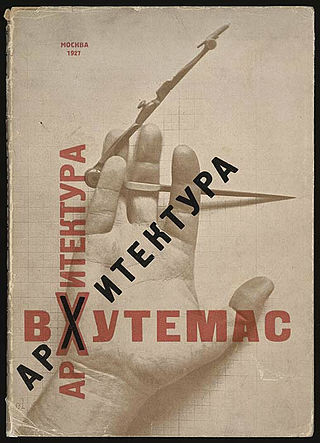
Vkhutemas was the Russian state art and technical school founded in 1920 in Moscow, replacing the Moscow Svomas.

Katarzyna Kobro was a Polish avant-garde sculptor and a prominent representative of the Constructivist movement in Poland. A pioneer of innovative multi-dimensional abstract sculpture, she rejected Aestheticism and advocated for the integration of spatial rhythm and scientific advances into visual art.

Productivism is an early twentieth-century art movement that is characterized by its spare geometry, limited color palette, and Cubist and Futurist influences. Aesthetically, it also looks similar to work by Kazimir Malevich and the Suprematists.

Lazar Markovich Lissitzky, better known as El Lissitzky, was a Russian artist, designer, photographer, typographer, polemicist and architect. He was an important figure of the Russian avant-garde, helping develop suprematism with his mentor, Kazimir Malevich, and designing numerous exhibition displays and propaganda works for the Soviet Union. His work greatly influenced the Bauhaus and constructivist movements, and he experimented with production techniques and stylistic devices that would go on to dominate 20th-century graphic design.

Constructivist architecture was a constructivist style of modern architecture that flourished in the Soviet Union in the 1920s and early 1930s. Abstract and austere, the movement aimed to reflect modern industrial society and urban space, while rejecting decorative stylization in favor of the industrial assemblage of materials. Designs combined advanced technology and engineering with an avowedly communist social purpose. Although it was divided into several competing factions, the movement produced many pioneering projects and finished buildings, before falling out of favour around 1932. It has left marked effects on later developments in architecture.
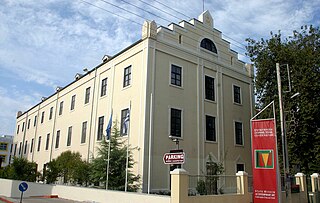
MOMus Modern, in full MOMus–Museum of Modern Art–Costakis Collection, is a modern art museum based in Thessaloniki, Central Macedonia, Greece. It is housed in the renovated building of the old Lazariston Monastery in the Borough of Stavroupoli in west Thessaloniki. It was formerly known as the State Museum of Contemporary Art.
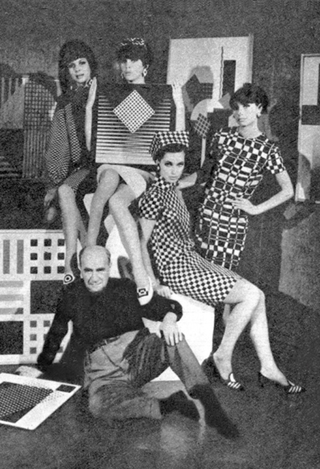
Henryk Berlewi was a Polish-French painter, graphic designer and art theorist, who is primarily remembered as an abstract artist who paved the way for optical art, but he was also an important figure in Yiddish book design and typography in the early 1920s. He drew portraits of many Jewish writers and artists, among them Uri Zvi Greenberg.

The Kultur Lige was a secular socialist Jewish organization established in Kiev in 1918, whose aim was to promote Yiddish language literature, theater and culture. The league organized various activities, including theater performances, poetry recitals, and concerts in Yiddish with the aim of disseminating Jewish art in Eastern Europe and Russia. Among some notable members of the organization were the scenic designer Boris Aronson, the artist and architect El Lissitzky, the writer David Bergelson, the sculptor Joseph Chaikov, the writer Peretz Markish, the poet David Hofstein, and artist Issachar Ber Ryback. Bergelson, Markish and Hofstein were later executed on Joseph Stalin's orders during the Night of the Murdered Poets, in 1952.
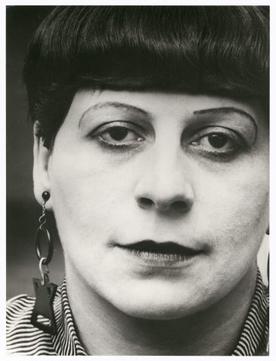
Florence Henri was a surrealist artist; primarily focusing her practice on photography and painting, in addition to pianist composition. In her childhood, she traveled throughout Europe, spending portions of her youth in Paris, Vienna, and the Isle of Wight. She studied in Rome, where she would encounter the Futurists, finding inspiration in their movement. From 1910 to 1922, she studied piano in Berlin, under the instruction of Egon Petri and Ferrucio Busoni. She would find herself landlocked to Berlin during the first World War, supporting herself by composing piano tracks for silent films. She returned to Paris in 1922, to attend the Académie André Lhote, and would attend until the end of 1923. From 1924 to 1925, she would study under painters Fernand Léger and Amédée Ozenfant at the Académie Moderne. Henri's most important artistic training would come from the Bauhaus in Dessau, in 1927, where she studied with masters Josef Albers and László Moholy-Nagy, who would introduce her to the medium of photography. She returned to Paris in 1929 where she started seriously experimenting and working with photography up until 1963. Finally, she would move to Compiègne, where she concentrated her energies on painting until the end of her life in 1982. Her work includes experimental photography, advertising, and portraits, many of which featured other artists of the time.

Aleksei Mikhailovich Gan was a Russian anarchist and later Marxist avant-garde artist, art theorist and graphic designer. Gan was a key figure in the development of Constructivism after the Russian Revolution.
Victor Margolin (1941–2019) was an American design historian, researcher and educator. He was a Professor of design history at the University of Illinois, Chicago, where he taught from 1982 until 2006. Margolin published widely and was the founding editor and co-editor of the academic design journal, Design Issues. A major work was his comprehensive World History of Design.

Ma is a Hungarian magazine connected with the Magyar Aktivizmus artistic group whose title not only reflects their initials but also means "today". It was founded in 1916 in Budapest by Lajos Kassák, who continued to publish it in exile in Vienna until 1925.

International Congress of Progressive Artists was organised by Young Rhineland, with help from the November Group, the Darmstadt Secession and the Dresden Secession in Düsseldorf, 29-31 May 1922. The aim of creating an international organisation of radical artists led to differing conceptions of how this should be done. Theo van Doesburg wrote "A short review of the proceedings" which included a proclamation calling for a permanent, universal, international exhibition of art from everywhere in the world and an annual universal, international music festival. With the slogan Artists of all nationalities unite’ they declared that "Art must become international or it will perish". According to van Doesburg, when those who refused to sign this proclamation were threatened with exclusion, this led to uproar.
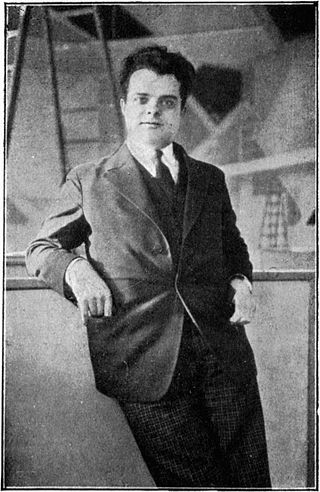
Werner Graeff, 24 August 24, 1901, Wuppertal - 29 August 29, 1978, Blacksburg, Virginia) was a German sculptor, painter, graphic artist, photographer, film maker and inventor.




















